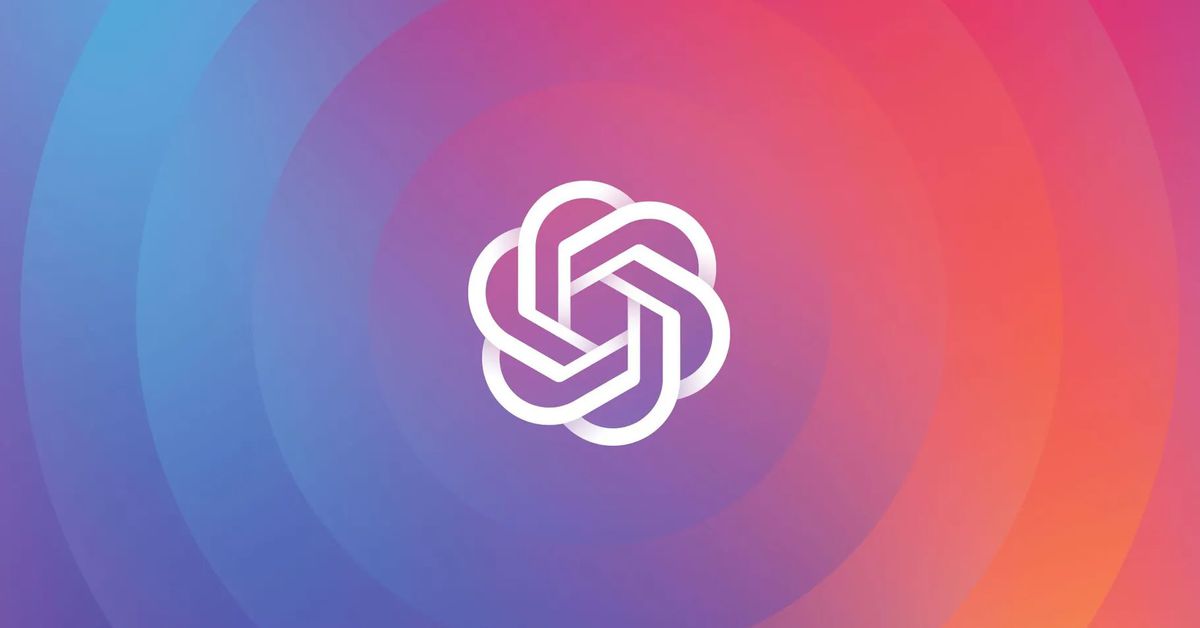OpenAI has publicly responded to a copyright lawsuit by The New York Times, calling the case “without merit” and saying it still hoped for a partnership with the media outlet.
In a blog post, OpenAI said the Times “is not telling the full story.” It took particular issue with claims that its ChatGPT AI tool reproduced Times stories verbatim, arguing that the Times had manipulated prompts to include regurgitated excerpts of articles. “Even when using such prompts, our models don’t typically behave the way The New York Times insinuates, which suggests they either instructed the model to regurgitate or cherry-picked their examples from many attempts,” OpenAI said.
OpenAI claims it’s attempted to reduce regurgitation from its large language models and that the Times refused to share examples of this reproduction before filing the lawsuit. It said the verbatim examples “appear to be from year-old articles that have proliferated on multiple third-party websites.” The company did admit that it took down a ChatGPT feature, called Browse, that unintentionally reproduced content.



The problem is not that it’s regurgitating. The problem is that it was trained on NYT articles and other data in violation of copyright law. Regurgitation is just evidence of that.
Training on copyrighted data should be allowed as long as it’s something publicly posted.
Only if the end result of that training is also something public. OpenAI shouldn’t be making money on anything except ads if they’re using copyright material without paying for it.
I was trained on copyrighted material… I guess I should work for free
I’ve seen and heard your argument made before, not just for LLM’s but also for text-to-image programs. My counterpoint is that humans learn in a very similar way to these programs, by taking stuff we’ve seen/read and developing a certain style inspired by those things. They also don’t just recite texts from memory, instead creating new ones based on probabilities of certain words and phrases occuring in the parts of their training data related to the prompt. In a way too simplified but accurate enough comparison, saying these programs violate copyright law is like saying every cosmic horror writer is plagiarising Lovecraft, or that every surrealist painter is copying Dali.
It doesn’t work that way. Copyright law does not concern itself with learning. There are 2 things which allow learning.
For one, no one can own facts and ideas. You can write your own history book, taking facts (but not copying text) from other history books. Eventually, that’s the only way history books get written (by taking facts from previous writings). Or you can take the idea of a superhero and make your own, which is obviously where virtually all of them come from.
Second, you are generally allowed to make copies for your personal use. For example, you may copy audio files so that you have a copy on each of your devices. Or to tie in with the previous examples: You can (usually) make copies for use as reference, for historical facts or as a help in drawing your own superhero.
In the main, these lawsuits won’t go anywhere. I don’t want to guarantee that none of the relative side issues will be found to have merit, but basically this is all nonsense.
Generally you’re correct, but copyright law does concern itself with learning. Fair use exemptions require consideration of the purpose character of use, explicitly mentioning nonprofit educational purposes. It also mentions the effect on the potential market for the original work. (There are other factors required but they’re less relevant here.)
So yeah, tracing a comic book to learn drawing is totally fine, as long as that’s what you’re doing it for. Tracing a comic to reproduce and sell is totally not fine, and that’s basically what OpenAI is doing here: slurping up whole works to improve their saleable product, which can generate new works to compete with the originals.
I meant “learning” in the strict sense, not institutional education.
I think you are simply mistaken about what AI is typically doing. You can test your “tracing” analogy by making an image with Stable Diffusion. It’s trained only on images from the public internet, so if the generated image is similar to one in the training data, then a reverse image search should turn it up.
That’s quite the claim to make so boldly. How about you prove it? Or maybe stop asserting things you aren’t certain about.
17 USC § 106, exclusive rights in copyrighted works:
Clearly, this is capable of reproducing a work, and is derivative of the work. I would argue that it’s displayed publicly as well, if you can use it without an account.
You could argue fair use, but I doubt this use would meet any of the four test factors, let alone all of them.
And I suppose people at OpenAI understand how to build a formal proof and that it is one. So it’s straight up dishonest.
Only publishing it is a copyright issue. You can also obtain copyrighted material with a web browser. The onus is on the person who publishes any material they put together, regardless of source. OpenAI is not responsible for publishing just because their tool was used to obtain the material.
There are issues other than publishing, but that’s the biggest one. But they are not acting merely as a conduit for the work, they are ingesting it and deriving new work from it. The use of the copyrighted work is integral to their product, which makes it a big deal.
Yeah, the ingestion part is still to be determined legally, but I think OpenAI will be ok. NYT produces content to be read, and copyright only protects them from people republishing their content. People also ingest their content and can make derivative works without problem. OpenAI are just doing the same, but at a level of ability that could be disruptive to some companies. This isn’t even really very harmful to the NYT, since the historical material used doesn’t even conflict with their primary purpose of producing new news. It’ll be interesting to see how it plays out though.
This is not correct. Copyright protects reproduction, derivation, distribution, performance, and display of a work.
Yes, you can legally make derivative works, but without license, it has to be fair use. In this case, where not only did they use one whole work in its entirety, they likely scraped thousands of whole NYT articles.
This isn’t necessarily correct either. I assume they sell access to their archives, for research or whatever. Being able to retrieve articles verbatim through chatgpt does harm their business.
Scraping is the same as reading, not reproducing. That isn’t a copyright violation.